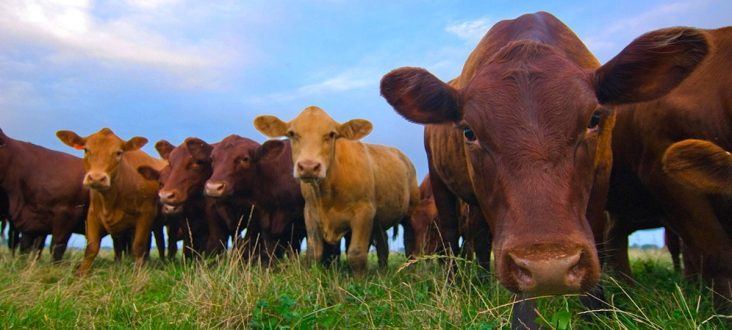Beef cattle prices drop as supply rises
by December 5, 2023 9:06 am 4,908 views

Beef cattle prices were relatively high during the first part of the year, but now those prices have started to fall as supplies have increased.
Prices for the January 2024 CME feeder cattle contract, for example, fell from a high of $268 per hundredweight in mid-September to $219 per hundredweight by the end of November, according to the Chicago Mercantile Exchange.
James Mitchell, extension economist and assistant professor in the Department of Agricultural Economics and Agribusiness at the University of Arkansas System Division of Agriculture, said the downturn in the markets is essentially due to two factors.
“Through the first eight months of this year, cattle markets trended higher,” Mitchell said. “We’ve seen really high prices throughout the year. Those prices were moving upward on what was mostly bullish information about cattle inventories and the size of our beef cow herd.”
Mitchell said that seasonality and a few recent reports from the U.S. Department of Agriculture have led to declines in futures and cash markets for cattle.
“The last two months, those prices have started to soften,” he said. Futures market prices are down significantly, Mitchell said, while local cash markets for calves have fallen less.
Arkansas typically ranks among the top 15 beef cattle producing states. There were nearly 1 million head of beef cattle/cows in the state in 2020, the U.S. Department of Agriculture (USDA) reported. That number has dropped to about 10% to 905,000, according to the USDA’s latest cattle inventory reports.
Beef is typically the fifth largest agri sector in Arkansas. It’s a nearly $1 billion industry in the state with about 24,000 farms. Roughly, 5.6 million acres are utilized in the industry, according to the Arkansas Farm Bureau.
While falling market prices at the end of a calendar year is typical seasonal behavior for U.S. cattle markets, as cow-calf operators sell off calves in the fall, Mitchell said the decline also reflected industry reaction to two recent reports from the USDA. The first was the USDA Cattle on Feed Report in September, when indicated larger-then-expected cattle placement in feed lots, Mitchell said.
“When you have larger-than-expected supplies, you will see downward pressure on cattle prices,” he said.
The second report was the November World Agricultural Supply and Demand Estimates report, commonly referred to as WASDE, which increased projected global beef production.
“If you see an increase of expected beef supplies in the future, that’s also a bearish piece of news about the expected value of cattle,” Mitchell said.
He said that current market activity indicates an exaggeration of the typical seasonal market trend.
“As you see prices come down more in the near-term on larger supplies, that tells me that we have a lot of producers that are just selling calves now, as opposed to retaining them, feeding them through the winter and selling them in March or April, coming off of a stocker operation,” he said. “Or it might just be that producers saw high prices and wanted to take advantage of that. Another part of that could be drought, it could be expensive feed; all those things could potentially contribute to that decision.
“I don’t think it’s a sign that anything’s broken, or that anything is inherently wrong with our cattle markets,” Mitchell said. “That’s just how they work: they’re seasonal, and they react to information.”
Much of the Southeast was affected by droughty conditions throughout the year. Mitchell said that with the relief of rain Arkansas received in October, the state’s producers were at least in better situations than those of producers in many neighboring states.
“From talking to colleagues in across the Southeast, I can tell you that they are as dry as they’ve been in a very long time,” he said. “So you have a lot of producers in that part of the country selling cattle because they can’t do anything with them. So that potentially makes it cheaper for Arkansas stocker operations to buy them.”
Mitchell said that current market trends are the perfect reminder of the benefits of crop insurance.
“We were in a very, very bullish market up to this point,” he said. “Prices just looked like they were going to continue to go up and up. It only took a couple of reports and some seasonal tendencies for those prices to decline. That’s why we have price risk management. It doesn’t matter if prices are trending down or up, you should consider PRM as part of your broader business plan. This is the kind of situation those tools are designed to protect you against.”
